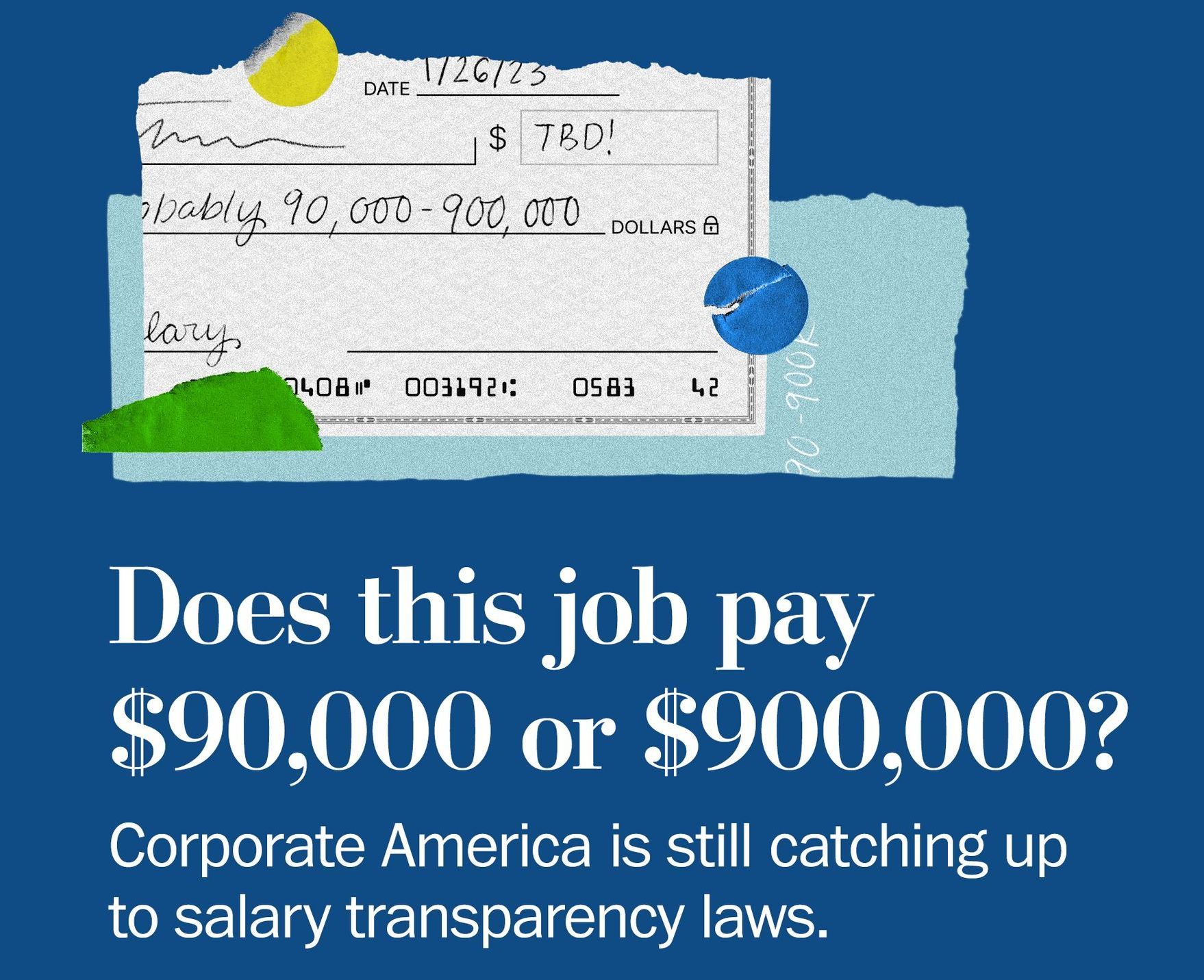Is Pay Transparency Working?
Enhancing Job Adverts with Pay Transparency: Revealing the True Potential of Career Paths
Over the past couple of years, pay transparency laws have emerged as a powerful tool to help job seekers gain better insights into potential job opportunities. These laws require employers to disclose pay ranges in their job advertisements, giving candidates a clearer picture of what they can expect to earn in a particular role. This newfound transparency has been a game-changer for many, empowering them to make more informed career decisions.

Empowering Job Seekers with Pay Transparency
Yun Yati Naing, a fresh graduate from Baruch College in New York City, experienced firsthand the benefits of pay transparency when searching for her first job after graduation. Thanks to a new law in the city that mandated salary disclosure, Yun could filter out opportunities that didn't meet her minimum salary expectation of $50,000. Armed with this crucial information, she narrowed her choices. Eventually, she accepted a job in financial services with a starting pay of $60,000 after negotiating a modest increase from the advertised range of $54,000 to $79,000.
She said, "All my friends were talking about it. It really made a difference going into the workforce as a fresh graduate. We had no idea what the wages of these entry-level jobs were."
The impact of pay transparency laws has been significant, with more states and cities enacting such legislation. Pay transparency laws cover over a quarter of the United States labour force. Job advertisements now frequently include pay range disclosures, up from less than 20 per cent before the pandemic.
California, Washington State, Colorado, and a handful of cities, including New York, recently enacted pay transparency legislation. Illinois also passed a pay transparency law in May. Lawmakers often introduce pay transparency laws in an effort to help reduce gender and racial wage gaps. Women are still only earning 84 per cent as much as men, whilst black, Hispanic and Native American workers around 75 per cent earned less than white workers. Transparent salary ranges help to demystify job searching.
Addressing Wage Disparities
One of the primary motivations behind implementing pay transparency laws is to address gender and racial wage gaps. These laws help demystify job searches and allow candidates to assess the fairness of the offered salaries. Given the persistent pay disparities in the workforce, such transparency is a crucial step toward fostering equality and fairness.
However, the effectiveness of pay transparency laws can vary depending on how employers comply with them. Some companies have embraced the change and provided meaningful salary ranges. In contrast, others have adopted a less helpful approach, using overly broad salary bands that apply to a wide range of positions within the organisation.
Kimberly Nguyen, a 25-year-old poet and UX writer, discovered pay disparities at her workplace due to pay transparency laws. As a contractor for Citigroup (Citi), she found a substantial pay gap between her $85,000 salary and the $117,200 to $175,800 range listed in a job posting for a similar position. Expressing her frustration on Twitter, her post went viral, drawing attention to the issue. However, despite the attention, no changes occurred, and Kimberly remained a contractor without a raise. She has been searching for new opportunities, emphasising the importance of advocating for fair compensation practices.
The Importance of Career Pathing in Job Adverts
While pay transparency is essential, it doesn't wholly capture a company's commitment to transparency and employee growth. In the public sector, career pathing has long been a part of job descriptions, and it is also increasingly gaining traction in the private sector.
By incorporating career pathing information into job postings, companies can signal their dedication to employee development. It conveys that they value their employees' growth and are willing to invest in their long-term success. This approach can be as simple as indicating the likely promotional tracks from the posted position to more detailed explanations of potential career trajectories.
Practical Examples of Career Pathing in Job Descriptions
Some organisations have already incorporated career pathing into their job advertisements. For instance, GitLab has experimented with providing a "Career Ladder" section in its job postings, linking to higher-level roles to showcase the potential growth within the company. Healthcare, facing a talent shortage, has been particularly proactive in adopting "Career Ladder" positions. Some organisations offer clear paths for advancement, indicating the training and opportunities for promotion that employees can expect once they are in the role.
The Power of Transparency: Attracting and Retaining Talent
Job seekers today are looking for competitive compensation and considering opportunities for career advancement and upskilling. Including career pathing information in job descriptions can make a significant difference in attracting and retaining talent.
While pay transparency laws have brought about positive changes, there is still room for improvement. Employers should strive to provide meaningful salary ranges and complement this with clear career paths. By doing so, companies can demonstrate their commitment to their employees' growth and development. Job seekers can make more informed decisions about their future careers.
As the job market continues to evolve, embracing transparency in all aspects of job adverts can set companies apart, creating a more inclusive and supportive workplace for current and prospective employees. Some employers still use broad salary ranges in job postings, making them less informative. For instance, Netflix's job ads display wide ranges from $60,000 to $290,000 for one role and $195,000 to $510,000 for another. This practice seems to be spreading in high-paying industries. How is this helpful to anyone? And it also begs the question, what are these companies trying to hide?
Economists' research shows that salary ranges are widening in fields like pharmacy, medical information, and scientific research, while jobs in food preparation and child care have better estimates.
The disparity may be due to differences in the labour market. Remote and higher-paying jobs have broader ranges, while lower-paid, in-person positions are seeing narrower ones. Tight labour markets may lead to more precise pay rates to compete for workers, whereas industries facing layoffs can attract applicants without disclosing exact salaries. Additionally, geographic trends show widening ranges in cities with new transparency laws.
Pay transparency is not going away, as more jurisdictions around the world continue to adopt them into legislation. Instead, organisations should get on the front foot, inform their workforce of the adoption or clearer transparency on pay scales, for existing staff as well as new hires, and promote the positive benefits to diversity and inclusion by doing so.



